Regulation of International Financial Markets and Banking
The research group "Regulation of International Financial Markets and Banking" analyzes international capital flows and the effects of regulatory changes on financial stability. Financial integration promotes efficient capital allocation and risk sharing but also eases the transmission of shocks across borders.
Banking regulation has accordingly evolved in recent years, yet the full impact of these reforms remains unclear. Hence, the group focuses on two areas:
First, it investigates the drivers of international capital flows and their effects on financial stability. Periods of high financial integration often precede crises with lasting real-economy consequences. The aim is to understand how to ensure stable and effective credit allocation.
Second, it examines how changes in regulation and supervision influence cross-border banking, especially within the context of European integration. This includes evaluating the balance between regulatory harmonization and unintended market distortions.
Two data projects support this research: the International Banking Library, a web-based platform for research exchange with a quarterly newsletter reaching more than 700 subscribers, and the Financial Markets Directives Database, which documents the implementation of key EU financial regulations with a special focus on the European Banking Union. Together, they promote evidence-based policymaking and enhance the group's global visibility.
Research Cluster
Economic Dynamics and StabilityYour contact

- Department Financial Markets
EXTERNAL FUNDING
10.2021 ‐ 06.2025
Distributional Effects of Macroeconomic Policies in Europe (DEMAP)
Leibniz Association
The project examines how political measures at the level of the European Union, for example the European Recovery Fund, affect inequality between households.
07.2017 ‐ 12.2022
The Political Economy of the European Banking Union
Causes of national differences in the implementation of the Banking Union and the resulting impact on financial stability.
01.2015 ‐ 12.2017
Dynamic Interactions between Banks and the Real Economy
Refereed Publications
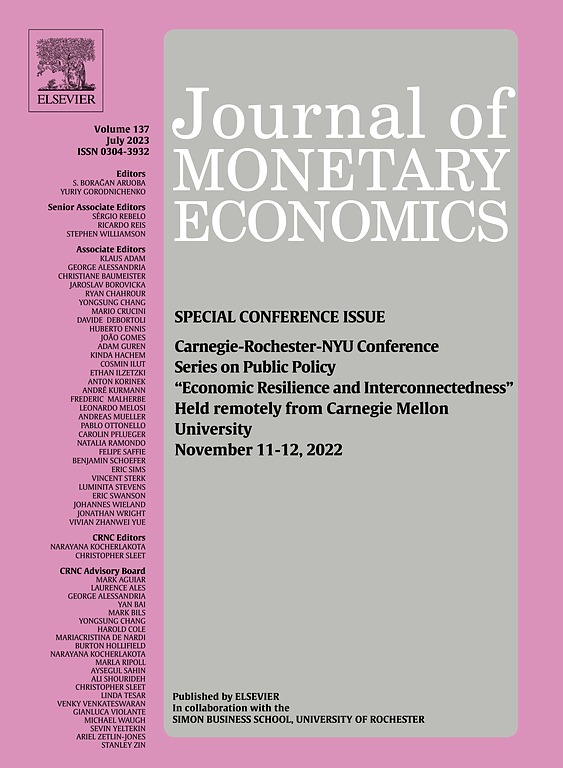
Lending Effects of the ECB’s Asset Purchases
in: Journal of Monetary Economics, December 2020
Abstract
Between 2010 and 2012, the European Central Bank absorbed €218 billion worth of government securities from five EMU countries under the Securities Markets Programme (SMP). Detailed security holdings data at the bank level affirms an effective lending stimulus due to the SMP. Exposed banks contract household lending, but increase commercial lending substantially. Holding non-SMP securities from stressed EMU countries amplifies the commercial lending response. The SMP also improved liquidity buffers and profitability without compromising credit quality.
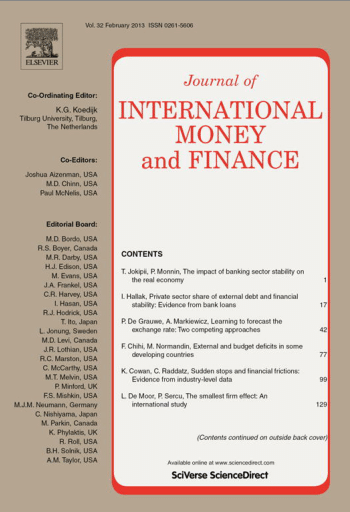
The Impact of Social Capital on Economic Attitudes and Outcomes
in: Journal of International Money and Finance, November 2020
Abstract
This article traces the extant literature on the impact of social capital on economic attitudes and outcomes. Special attention is paid to clarify conceptual ambiguities, measurement techniques, channels of influence, and identification strategies. Insights derived from the literature are then used to analyze the marketplace lending industry in China, where the size of the peer-to-peer (P2P) lending market is larger than that of the rest of the world combined. Ironically, approximately two-thirds of these online P2P lending platforms have failed. Empirical evidence from the monthly operating data of 735 lending platforms and transaction level data from one prominent platform (Renrendai) shows that platforms in provinces with high social capital have low risk of failure, and borrowers in provinces with high social capital can borrow at low interest rate and are less likely to default. We also provide observations to guide future economic research on social capital.

Finance and Wealth Inequality
in: Journal of International Money and Finance, November 2020
Abstract
Using a global sample, this paper investigates the determinants of wealth inequality capturing various economic, financial, political, institutional, and geographical indicators. Using instrumental variable Bayesian model averaging, it reveals that only a handful of indicators robustly matters and finance plays a key role. It reports that while financial depth increases wealth inequality, efficiency and access to finance reduce inequality. In addition, redistribution and education are associated with lower inequality whereas wars and openness to international trade contribute to greater wealth inequality.
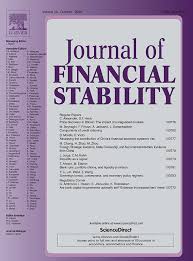
Are Bank Capital Requirements Optimally Set? Evidence from Researchers’ Views
in: Journal of Financial Stability, October 2020
Abstract
We survey 149 leading academic researchers on bank capital regulation. The median (average) respondent prefers a 10% (15%) minimum non-risk-weighted equity-to-assets ratio, which is considerably higher than the current requirement. North Americans prefer a significantly higher equity-to-assets ratio than Europeans. We find substantial support for the new forms of regulation introduced in Basel III, such as liquidity requirements. Views are most dispersed regarding the use of hybrid assets and bail-inable debt in capital regulation. 70% of experts would support an additional market-based capital requirement. When investigating factors driving capital requirement preferences, we find that the typical expert believes a five percentage points increase in capital requirements would “probably decrease” both the likelihood and social cost of a crisis with “minimal to no change” to loan volumes and economic activity. The best predictor of capital requirement preference is how strongly an expert believes that higher capital requirements would increase the cost of bank lending.
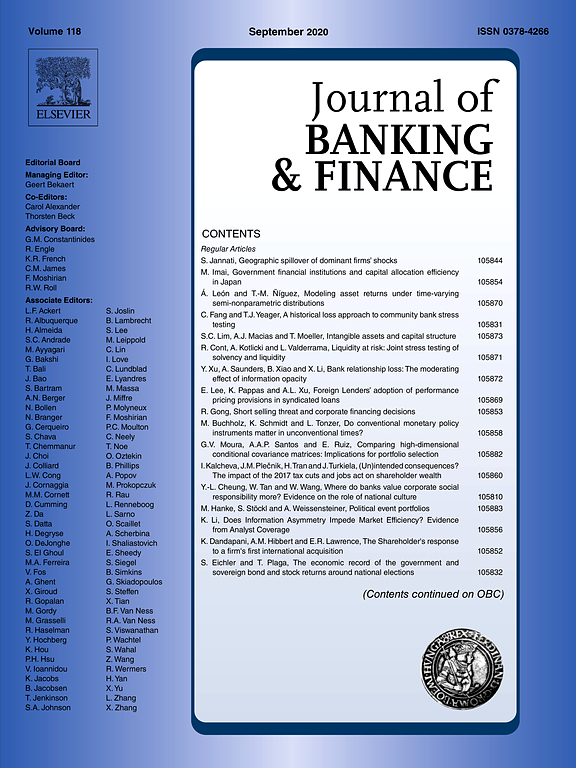
Interactions Between Bank Levies and Corporate Taxes: How is Bank Leverage Affected?
in: Journal of Banking and Finance, No. 105874, September 2020
Abstract
Regulatory bank levies set incentives for banks to reduce leverage. At the same time, corporate income taxation makes funding through debt more attractive. In this paper, we explore how regulatory levies affect bank capital structure, depending on corporate income taxation. Based on bank balance sheet data from 2006 to 2014 for a panel of EU-banks, our analysis yields three main results: The introduction of bank levies leads to lower leverage as liabilities become more expensive. This effect is weaker the more elevated corporate income taxes are. In countries charging very high corporate income taxes, the incentives of bank levies to reduce leverage turn insignificant. Thus, bank levies can counteract the debt bias of taxation only partially.
Working Papers
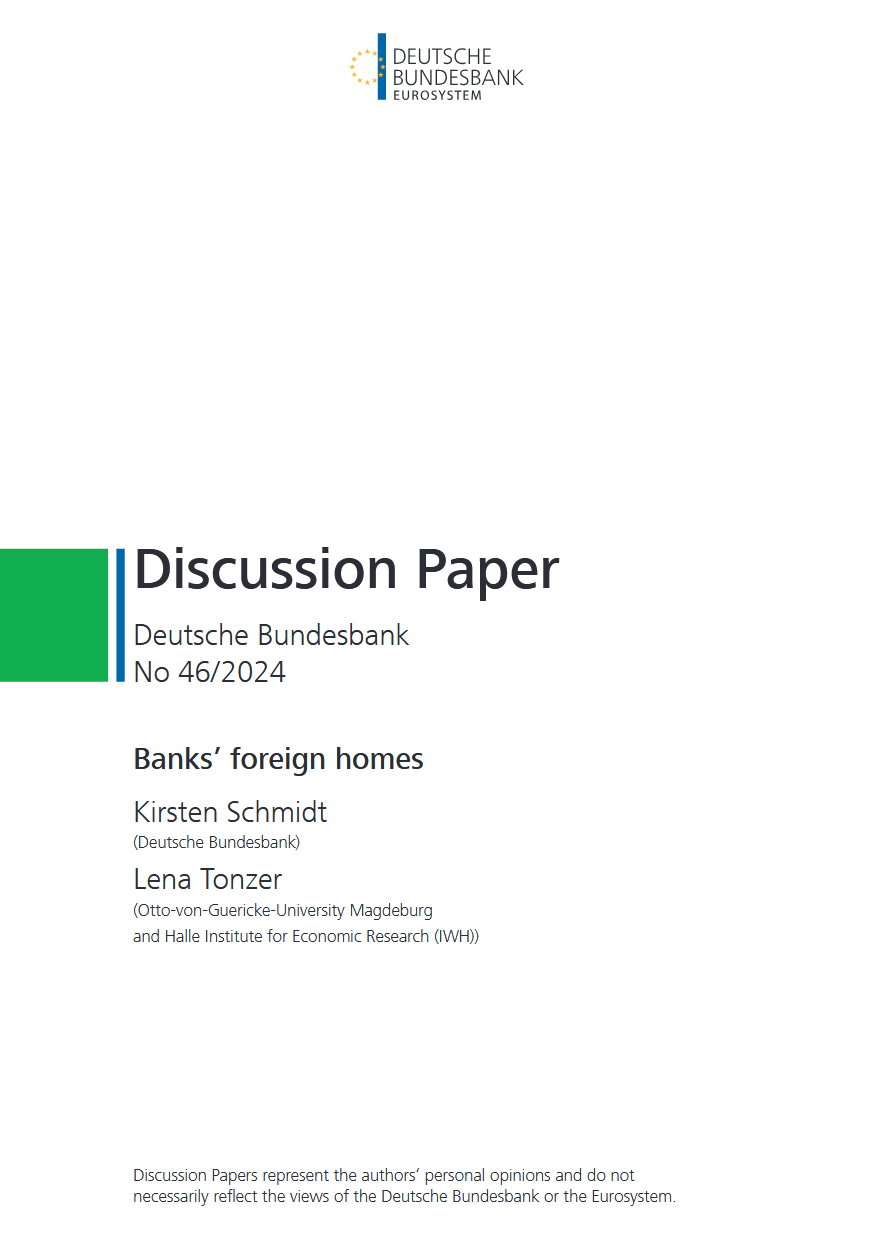
Banks’ foreign homes
in: Deutsche Bundesbank Discussion Papers, No. 46, 2024
Abstract
<p>Our results reveal that higher lending spreads between foreign and home markets redirect real estate backed lending towards foreign markets offering a higher interest rate, which provides evidence for "search for yield" behavior. This re-allocation is found especially for banks with more expertise on the foreign market due to a higher local activity and holds for commercial and residential real estate backed loans. Furthermore, "search for yield" behavior and a resulting increase in foreign real estate backed lending is found when macroprudential regulation is missing or misaligned between a bank’s country of residence and the destination country. When turning to the question of whether the detected search for yield behavior results in more risk, we find that especially better capitalized banks report higher forbearance ratios as they might face less stigma effects compared to low capitalized banks.</p>
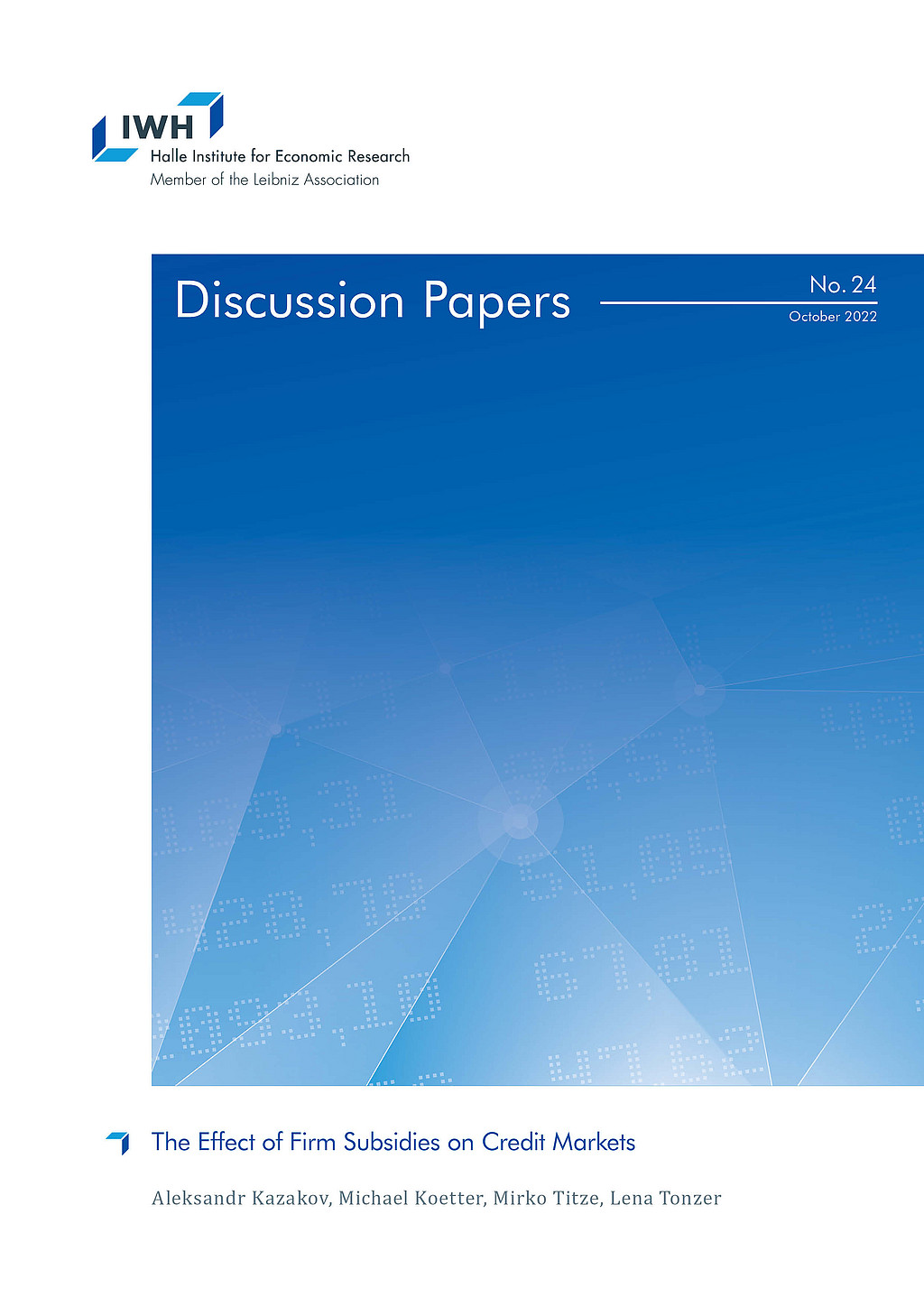
The Effect of Firm Subsidies on Credit Markets
in: IWH Discussion Papers, No. 24, 2022
Abstract
<p>We use granular project-level information for the largest regional economic development program in German history to study whether government subsidies to firms affect the quantity and quality of bank lending. We combine the universe of recipient firms under the Improvement of Regional Economic Structures program (GRW) with their local banks during 1998-2019. The modalities of GRW subsidies to firms are determined at the EU level. Therefore, we use it to identify bank outcomes. Banks with relationships to more subsidized firms exhibit higher lending volumes without any significant differences in bank stability. Subsidized firms, in turn, borrow more indicating that banks facilitate regional economic development policies.</p>
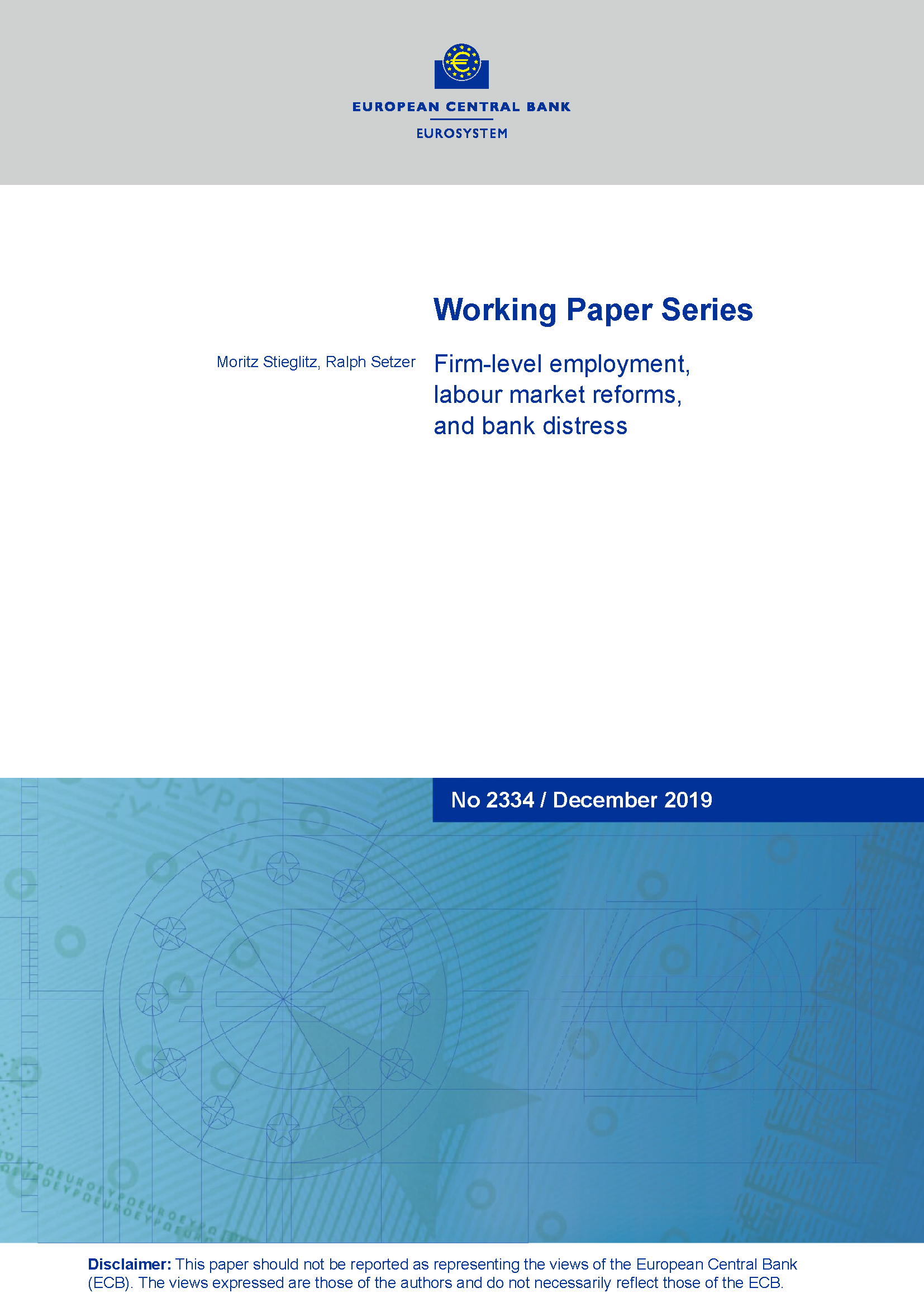
Climate Change-Related Regulatory Risks and Bank Lending
in: ECB Working Paper, No. 2670, 2022
Abstract
We identify the effect of climate change-related regulatory risks on credit real-location. Our evidence suggests that effects depend borrower's region. Following an increase in salience of regulatory risks, banks reallocate credit to US firms that could be negatively impacted by regulatory interventions. Conversely, in Europe, banks lend more to firms that could benefit from environmental regulation. The effect is moderated by banks' own loan portfolio composition. Banks with a portfolio tilted towards firms that could be negatively a affected by environmental policies increasingly support these firms. Overall, our results indicate that financial implications of regulation associated with climate change appear to be the main drivers of banks' behavior.
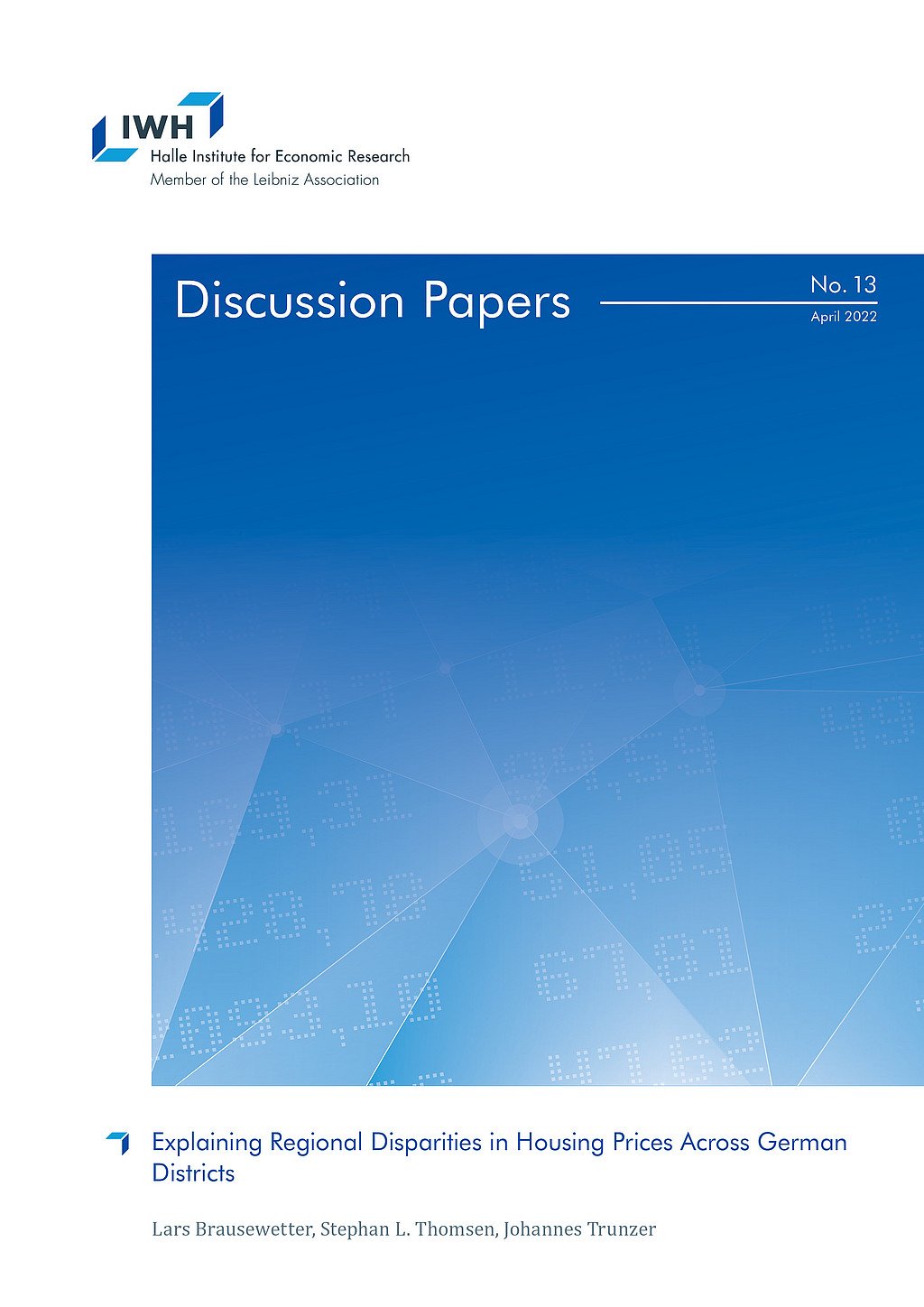
Explaining Regional Disparities in Housing Prices Across German Districts
in: IWH Discussion Papers, No. 13, 2022
Abstract
Over the last decade, German housing prices have increased unprecedentedly. Drawing on quality-adjusted housing price data at the district level, we document large and increasing regional disparities: Growth rates were higher in 1) the largest seven cities, 2) districts located in the south, and 3) districts with higher initial price levels. Indications of price bubbles are concentrated in the largest cities and in the purchasing market. Prices seem to be driven by the demand side: Increasing population density, higher shares of academically educated employees and increasing purchasing power explain our findings, while supply remained relatively constrained in the short term.
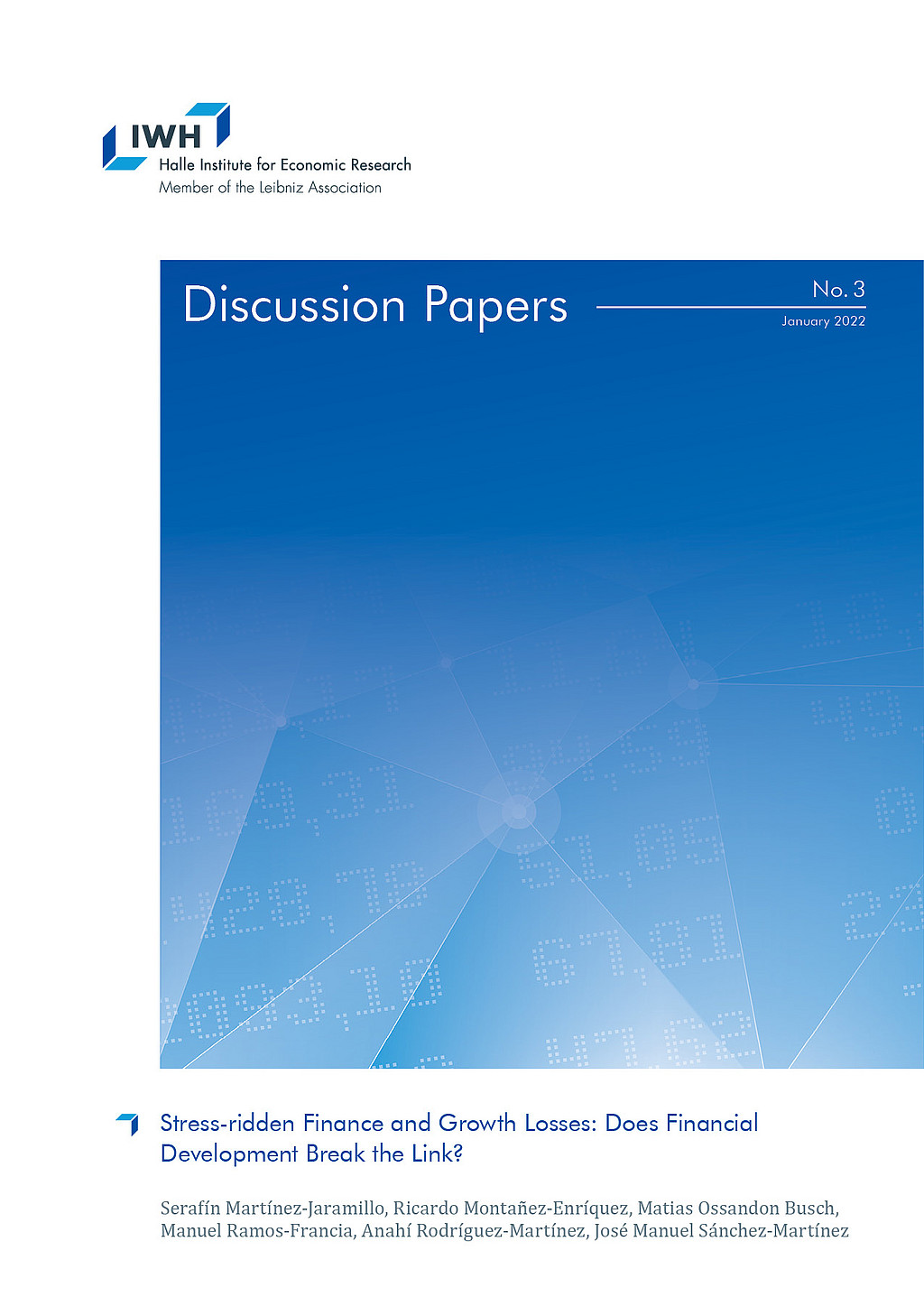
Stress-ridden Finance and Growth Losses: Does Financial Development Break the Link?
in: IWH Discussion Papers, No. 3, 2022
Abstract
Does financial development shield countries from the pass-through of financial shocks to real outcomes? We evaluate this question by characterising the probability density of expected GDP growth conditional on financial stability indicators in a panel of 28 countries. Our robust results unveil a non-linear nexus between financial stability and expected GDP growth, depending on countries’ degree of financial development. While both domestic and global financial factors affect expected growth, the effect of global factors is moderated by financial development. This result highlights a previously unexplored channel trough which financial development can break the link between financial (in)stability and GDP growth.















